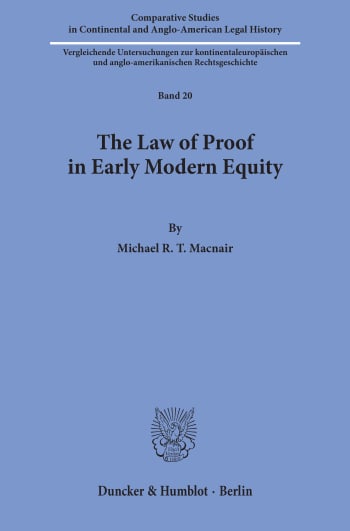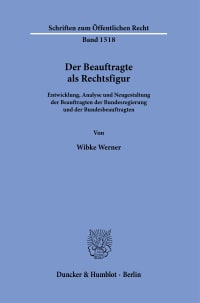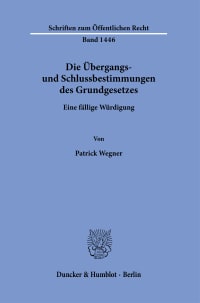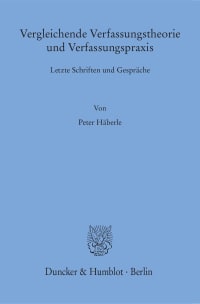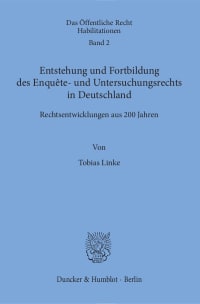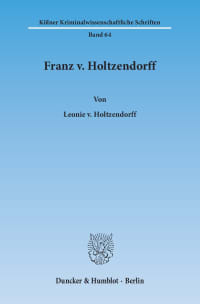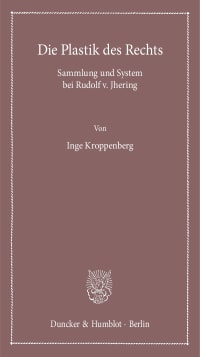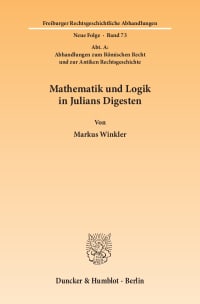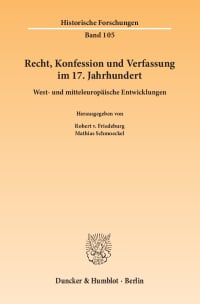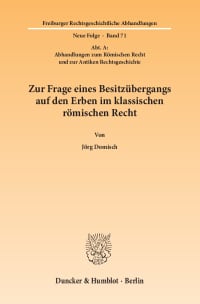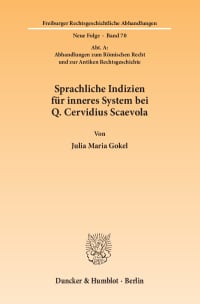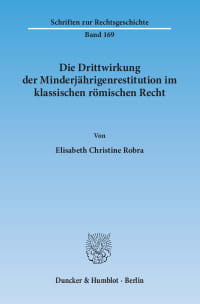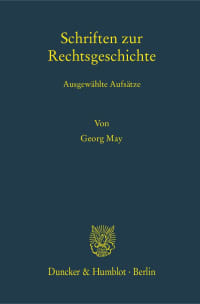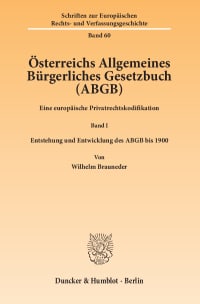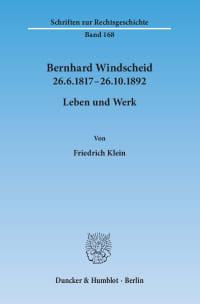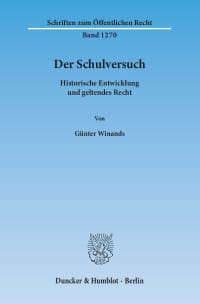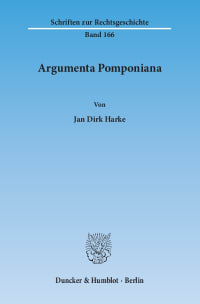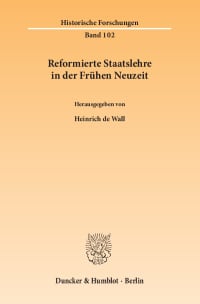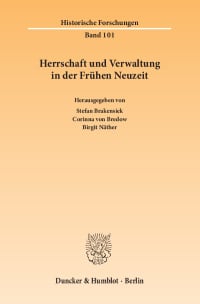Beschreibung
This volume is a systematic study of the rules of proof in English Courts of Equity between the later sixteenth and the early eighteenth century. In this period the proof practices of the Courts of Equity were controversial, as contemporary lawyers saw them as linked to the Civil Law, and some perceived a threat to the Common Law tradition. The reality of this linkage and threat has continued to be controversial among historians. In addition, this period saw the early stages of the development of the Common Law of Evidence, which in modern law is a striking divergence from Civil Law systems. The origins of the law of evidence have traditionally been linked to the need for judges to control the jury, but this view has been subject to several recent critiques. The Courts of Equity did not generally use jury trial. This study considers Equity proof rules in their relationships to contemporary Civil and Canon Law proof conceptions, medieval Common Law rules governing proof of facts, and early Common Law evidence rules. It concludes that Equity courts operated a variant of civilian proof concepts, and mediated an influence of these concepts on the origins of the Common Law of Evidence. These findings cast a new light on the debates on these origins, and on the relationship between the Common Law and Civil Law traditions in early modern England.
Inhaltsübersicht
Inhalt: I. Introductory: Equity proof and the origins of the common law of evidence - Common law, civil law and equity procedure - A note on the scope and sources of the study - II. Allegations and Confessions: Secundum allegata et probata: Variance from the bill - The confession of the adverse party - Conclusion - III. Proof by Documents: Concepts, Contexts and Conditions of Use: General conceptions of proof by documents - Conditions for the use of documents - Conclusion - IV. The Weight of Documentary Proof: Writing preferred - Writing required - Conclusion: Preference for writings - V. Proof by Witnesses - Principles and Procedure: The principles of proof by witnesses in the learned laws - The examination of witnesses in equity - Conclusion - VI. Exceptions to Witnesses: Wigmore's arguments - The classification of exceptions - Natural incapacity: Children and lunatics - Bad character - Bias - Conclusion - VII. Compulsion to Testify and its Limits: Compulsion to testify - Exemptions from compulsion - Privilege - Conclusion - VIII. The Weight of Testimony: The weight of the oath - Equity examination and the purpose of cross-examination - The requirement of two witnesses - Conflict of testimony - Hearsay and opinion - Conclusion - IX. The Burden and Standard of Proof and Presumptions: The burden and standard of proof - Presumptions - X. Conclusions: Equity proof, trial by jury, and the origins of the law of evidence - Equity, common law, and civil law - Bibliography
Bücher aus denselben Fachgebieten
Kontakt
-
+49 30 / 79 00 06 - 0
-
Bestellinformation
-
Versandkostenfrei innerhalb Deutschlands.
-
Für Kunden aus EU-Ländern verstehen sich unsere Preise inklusive der gesetzlichen Mehrwertsteuer und – außer bei digitalen Publikationen – zuzüglich Versandkosten. Für Kunden aus Nicht-EU-Ländern verstehen sich unsere Preise als mehrwertsteuerfrei und – außer bei digitalen Publikationen – zuzüglich Versandkosten.
-
-
Newsletter
